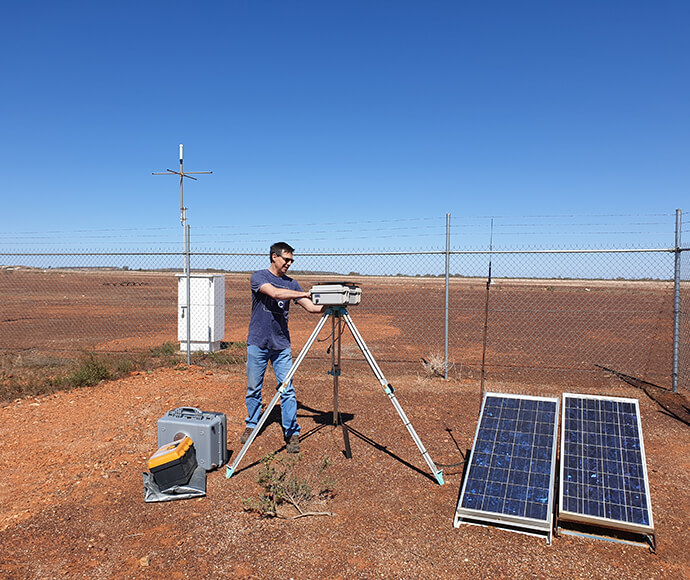New South Wales now has Australia’s largest integrated air quality monitoring system, made up of over 90 stations located in remote, rural, coastal and urban areas.
This builds on the existing standard long-term air quality monitoring stations across the state and monitoring sites the from 20-year-old ‘DustWatch program’.
DustWatch sites across rural and remote locations have been upgraded to form the NSW rural air quality monitoring network.
DustWatch sites are maintained by our scientists and volunteers.
The challenge
Air pollution can have significant impacts on humans, animals, our natural environment and our infrastructure.
Air pollution results in the premature death of more than 500 people each year in Sydney alone. Human-caused air-pollution also affects the everyday health of many more. Economic costs exceed $5 billion per year, according to a 2023 study.
Dust storms can be extremely damaging. A single dust storm in 2009 cost the NSW economy just under $300 million.
We need accurate, timely air quality data across the state to be able to respond effectively to air pollution events. A state-wide monitoring system needs:
- a modern monitoring network with suitable equipment
- high-quality data management and display software
- people to maintain the equipment and systems.
In the past, the DustWatch sites were managed through a separate system that did not ‘talk’ to the system for standard monitoring stations.
The air monitoring system now connects stations across these areas and also provides region-specific datasets for:
- regional and rural areas
- Sydney
- the Upper Hunter
- the Lower Hunter and Central Coast
- the Illawarra.

To build an integrated air monitoring system that satisfies the needs of the NSW community, we have integrated all our air quality monitoring sites.
We’ve built on the success of the DustWatch program, and the other coastal and urban monitoring stations.
This project involved:
- upgrading monitoring equipment across the state
- establishing new weather stations
- training volunteers to use the instruments
- integrating new data sources into software and improving internal processes
- collaborating with other state government agencies and the Clean Air Society of Australia and New Zealand
- working with the Murray–Darling Basin Catchment Management Authority in South Australia and the Mallee and North Central Catchment Management Authorities in Victoria.
Over 90 monitoring stations across rural, coastal and urban areas now work together to provide state-wide data on air quality.
Data are available in real-time on the internet via the NSW Air quality website and via mobile apps.
The data is used by:
- the general public
- government agencies, such as the NSW Environmental Protection Authority and Local Land Services
- emergency services
- health authorities
- local councils
- the Bureau of Meteorology
- land managers, for example to manage dusty areas
- researchers.
The rural air quality monitoring network runs over 35 sites, worth about $1.4 million.
Citizen scientists are key contributors for the rural air quality monitoring network. Our community volunteers help maintain the stations and report dust activity in their areas. Their extraordinary work is worth about $400,000 a year to the community.
'The success of the DustWatch program has largely come from the incredible commitment of the 40 volunteers who manage the monitoring equipment,' said Stephan Heidenreich, senior scientist and manager of the DustWatch program since 2004.
'Some of our volunteers have been helping us collect data for close to 20 years.'
Our air monitoring teams will continue to expand air quality monitoring technology. Exciting developments ahead include:
- new mapping interfaces, software upgrades and front-end software/mapping upgrades to provide a better user experience
- more collaboration with other states and territories to reduce costs and increase efficiencies
- greater adoption of the integrated approach to air quality monitoring by industry and government.